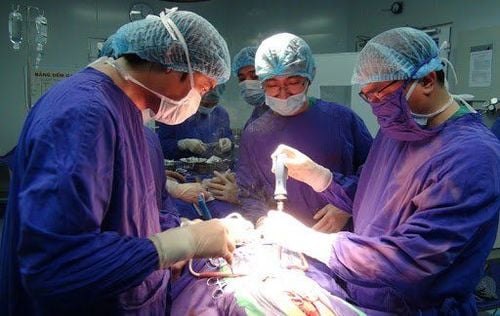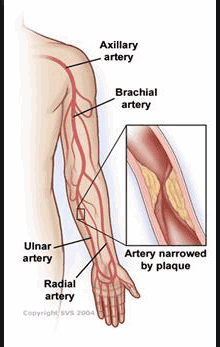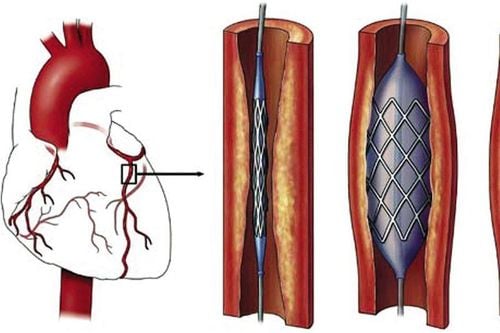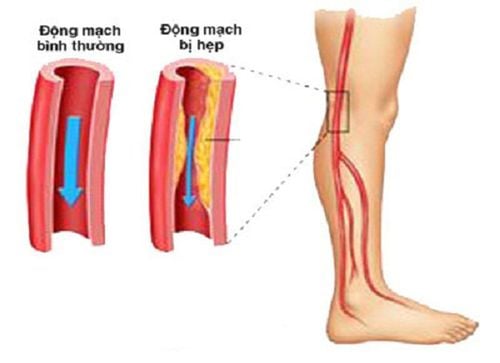This is an automatically translated article.
The article was professionally consulted with Doctor Nguyen Hong Vinh - Cardiologist - Cardiovascular Center - Vinmec Central Park International General Hospital.Chronic anemia in the lower extremities causes many dangerous diseases such as amputation, metabolic disorders, diabetes, visceral vessels... affecting the daily life and health of patients.
1. What is chronic lower extremity anemia?
Chronic lower limb ischemia is a condition in which the aorta and lower extremity arteries are narrowed, obstructing blood circulation to the muscles and other related organs such as nerves, skin, etc. downstream. . This leads to anaerobic metabolism and increased production of lactic acid, which causes pain on exertion.To diagnose chronic lower extremity ischemia can be based on the initial symptoms and symptoms such as: Pain in the extremities (intermittent pain or intermittent pain); loss of blood vessels in the extremities and dystrophy - necrosis of the extremities.
In addition, can rely on ABI (ankle-brachial blood pressure index) for clinical diagnosis. If ABI < 0.75, then the patient is at risk of chronic lower extremity ischemia.
To get the most accurate results, the patient needs to go to the hospital, perform the indications for imaging such as:
Doppler ultrasound Scanning the limb arteries / MS-CT reconstruction, background removal. Digital angiography erases the background. Vascular IMR ... Chronic anemia needs to be treated early to avoid health consequences. When the patient has the following symptoms, surgery should be performed.
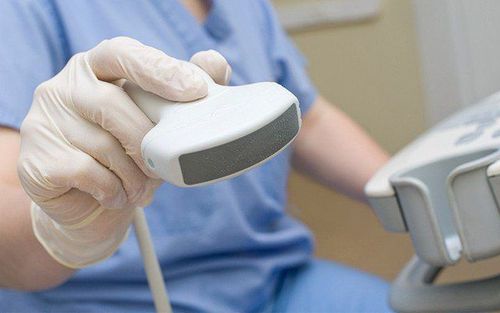
Người bệnh cần thực hiện các xét nghiệm chụp chiếu để chẩn đoán bệnh chính xác nhất
2. Bypass surgery to treat chronic anemia
Currently, bypass surgery to treat chronic limb ischemia is very popular in medicine. This is a vascular surgery method applied to occlusion of the iliac, femoral, and sub-knee arteries of lower extremity artery disease.Treatment of chronic limb ischemia by bypass surgery is done by 2 methods:
Bypass surgery "according to" anatomy is applied in: Host - pelvis; Holder - thigh; Thighs - hamstrings. Anatomical “outside” bypass surgery is applied in: Armpit – thigh; Thighs - thighs; Peripheral (arteries of the legs, feet). However, not everyone can perform bypass surgery. In cases where the contraindication of vascular surgery is severe damage to the peripheral blood vessels, the possibility of occlusion of the bridge after surgery will not be allowed to perform surgery.
3. Follow-up after surgery
Like any surgery, bypass surgery can have complications. Therefore, after surgery, the patient is transferred to the recovery room to monitor heart rate, pulse, temperature, blood pressure...In all cases, it is necessary to prepare antibiotics for infection prophylaxis, infusion blood... To avoid bleeding, it is necessary to use anticoagulants after the first 6-8 hours after surgery.
In case the patient has complications such as: bleeding, thrombosis after surgery, infection... immediate measures should be taken.
If the patient is bleeding, the coagulation should be adjusted. Patients may have surgical site infection, depending on the severity of the infection, it is necessary to cut the sutures at intervals, re-operate, and replace the silver-coated vessels. Postoperative embolism: Indication for re-operating to remove thrombus or redo the bridge.
Please dial HOTLINE for more information or register for an appointment HERE. Download MyVinmec app to make appointments faster and to manage your bookings easily.




